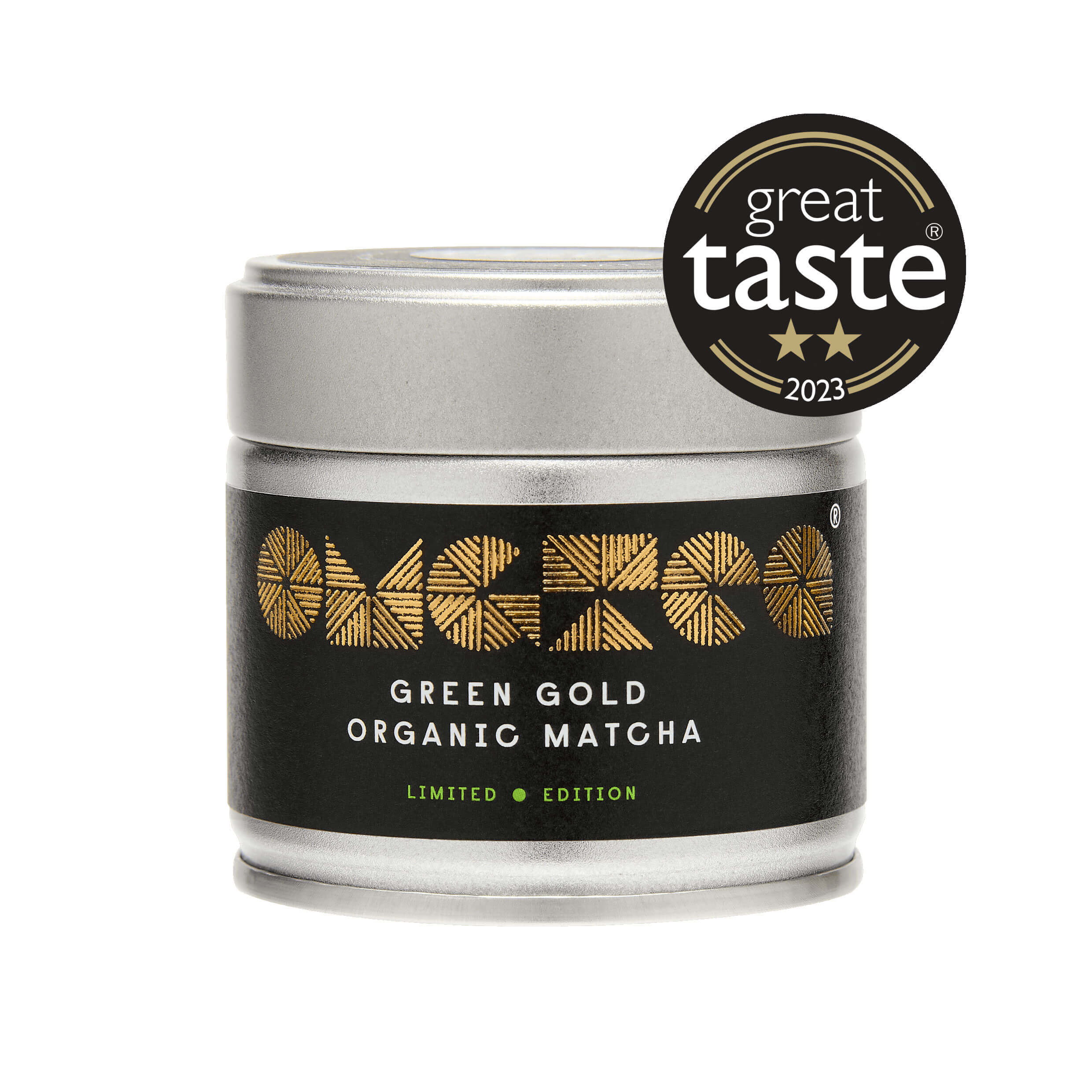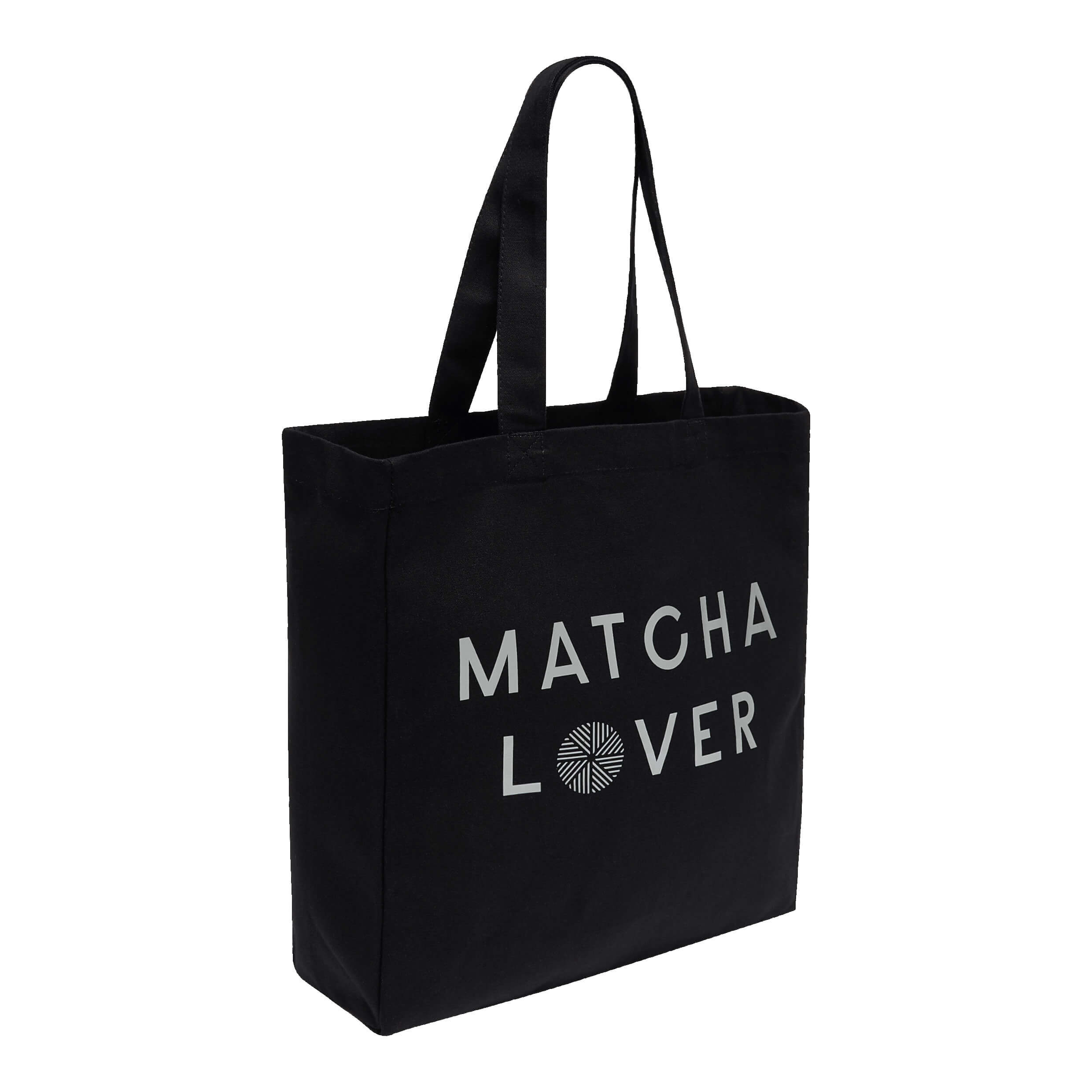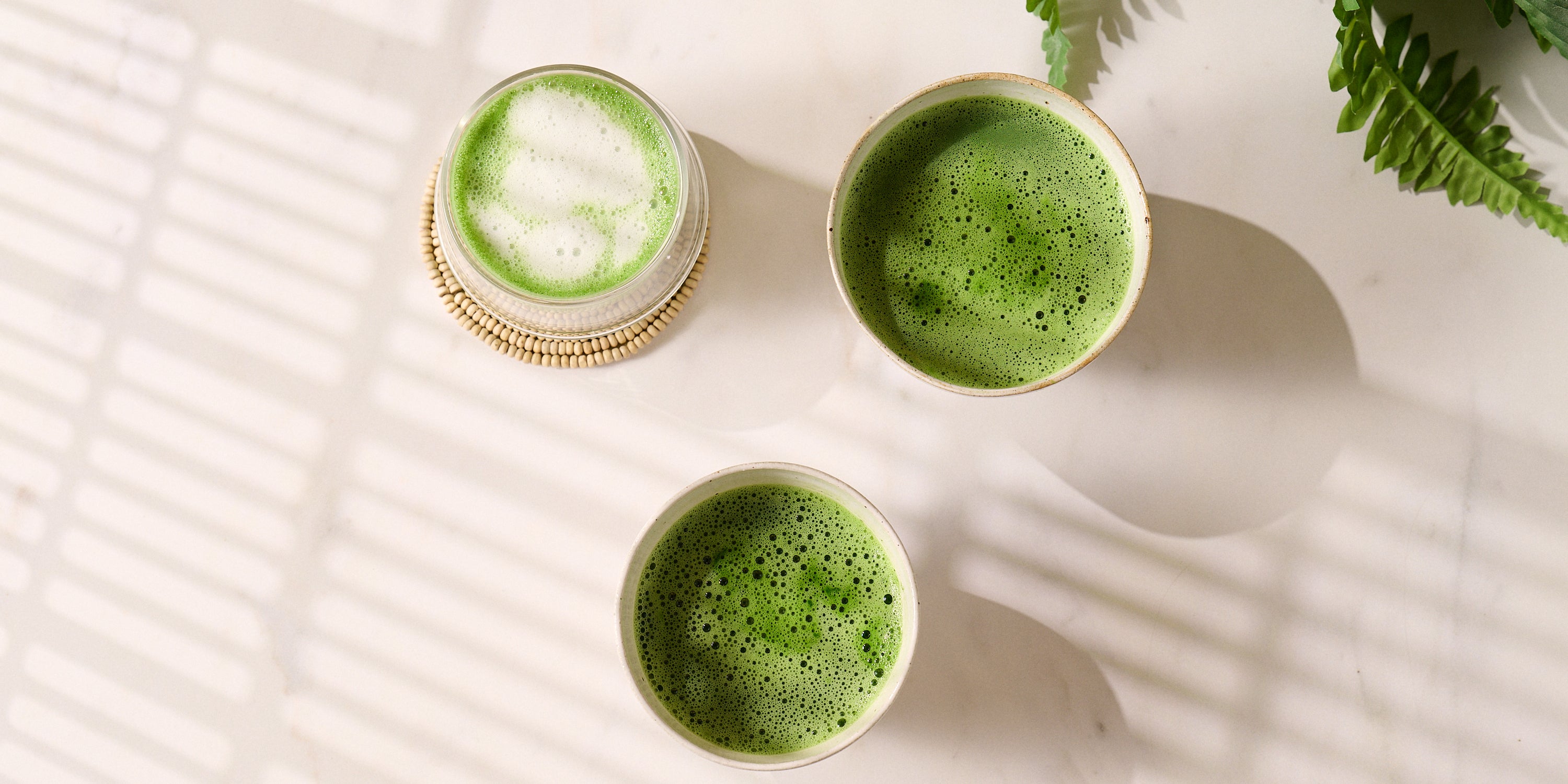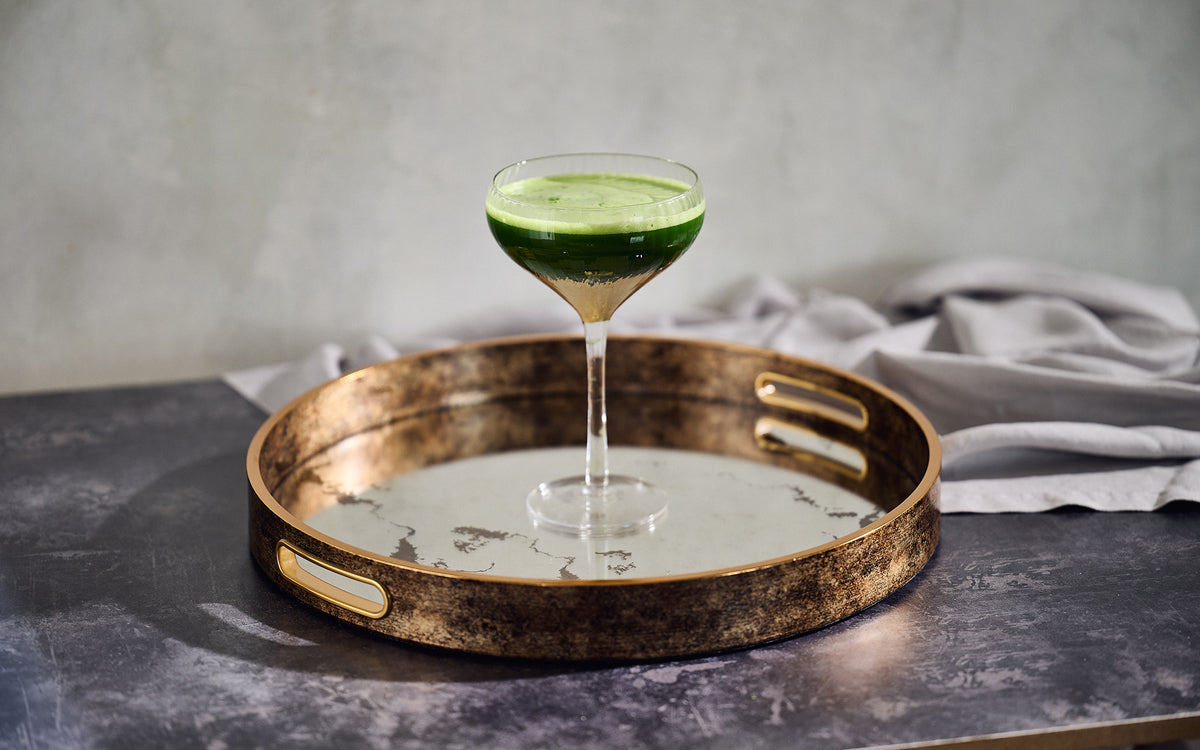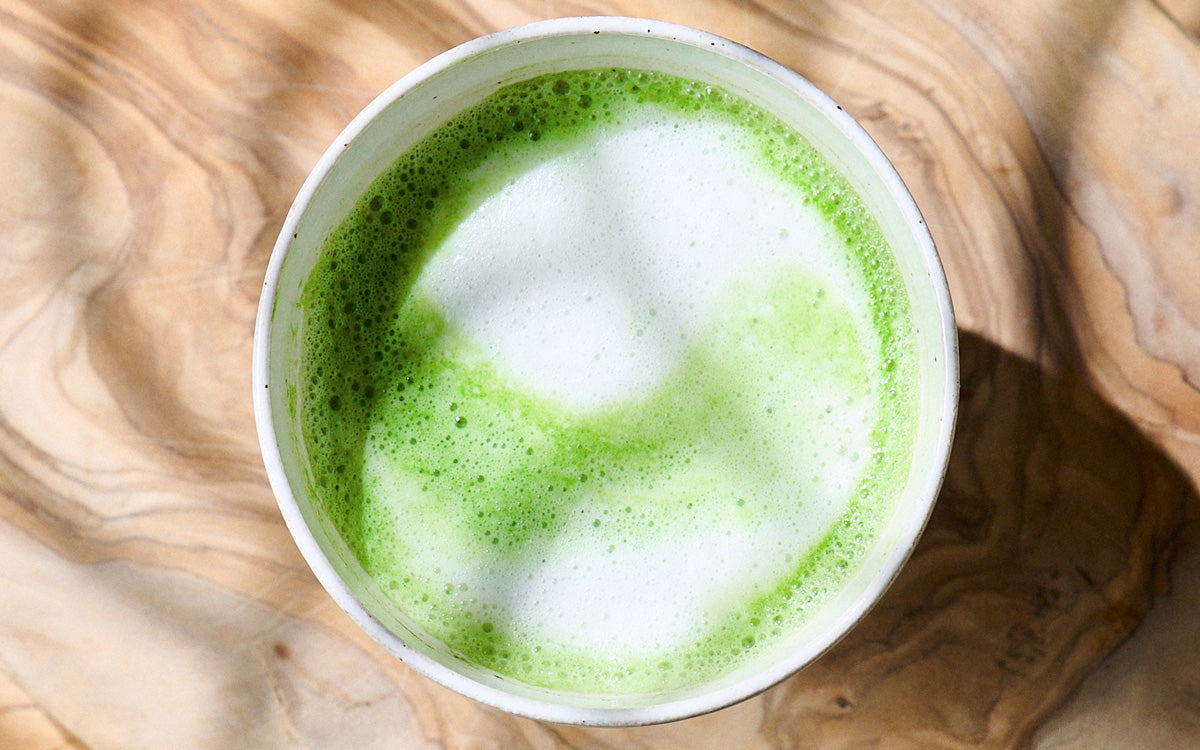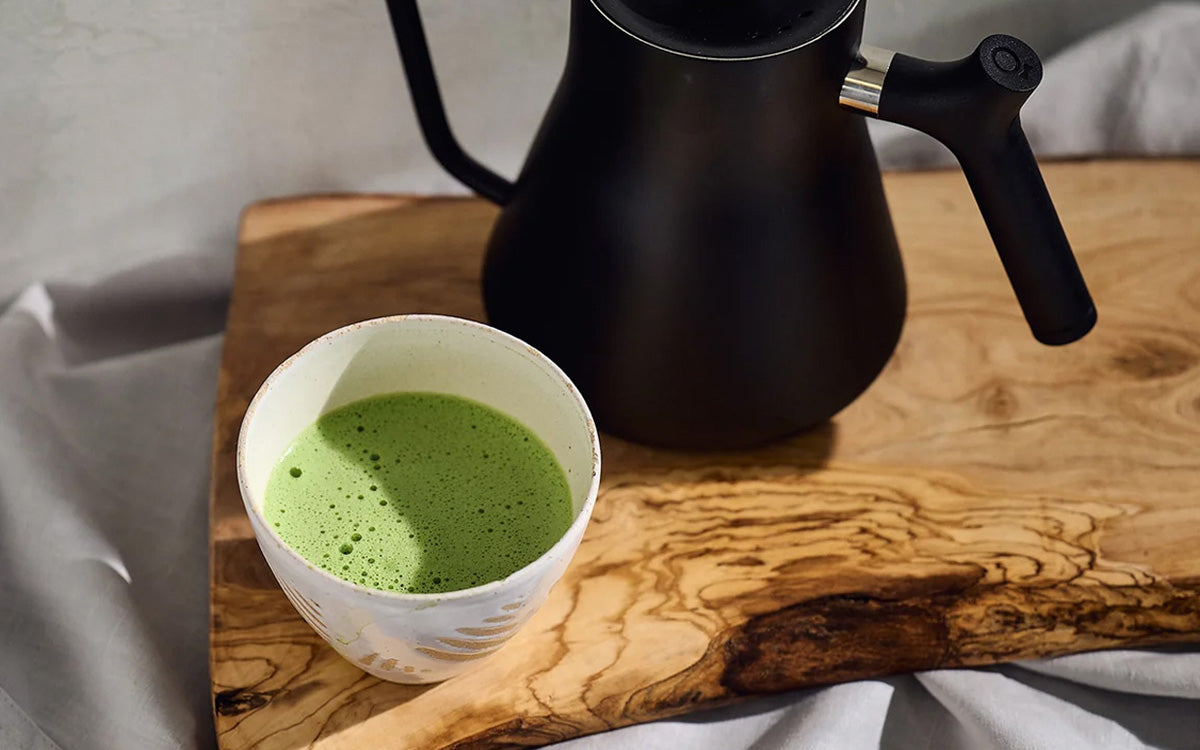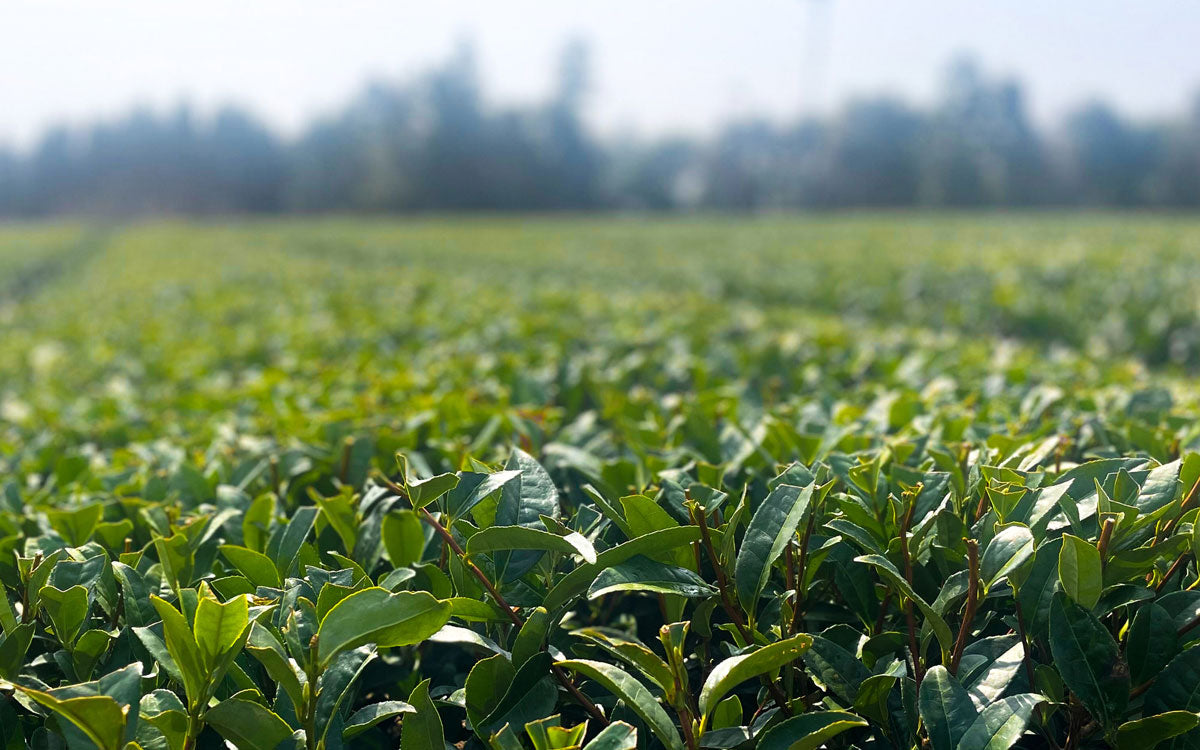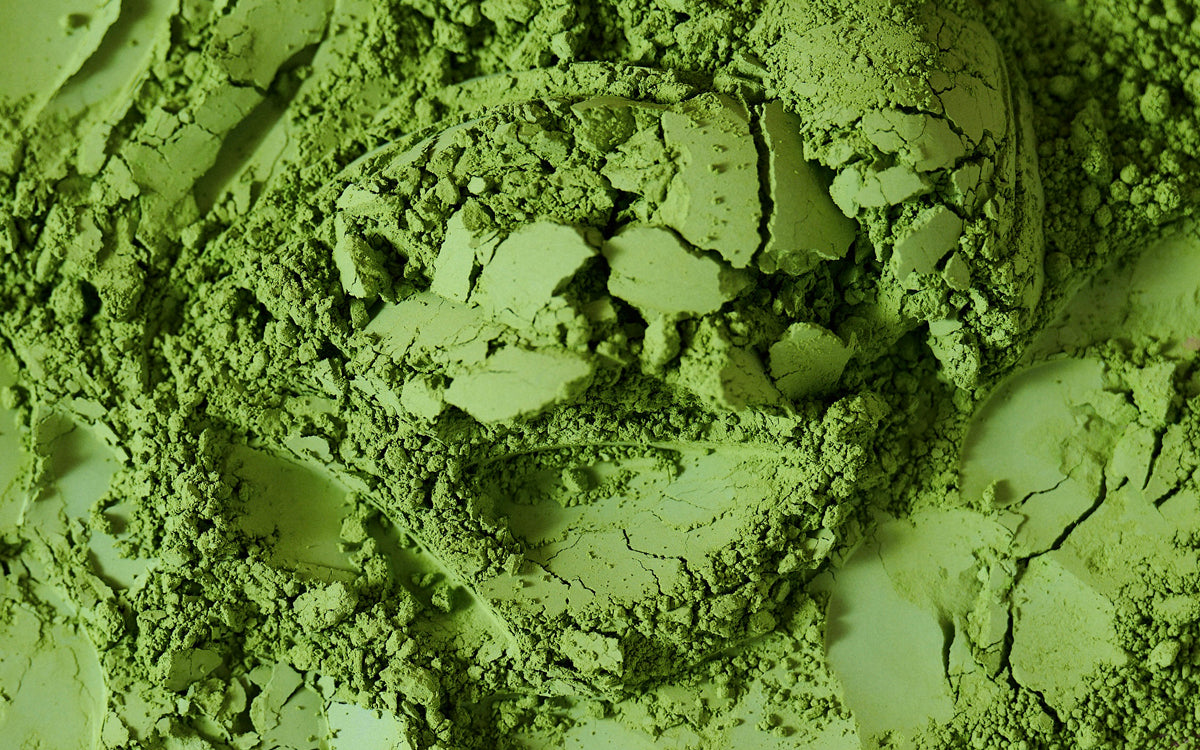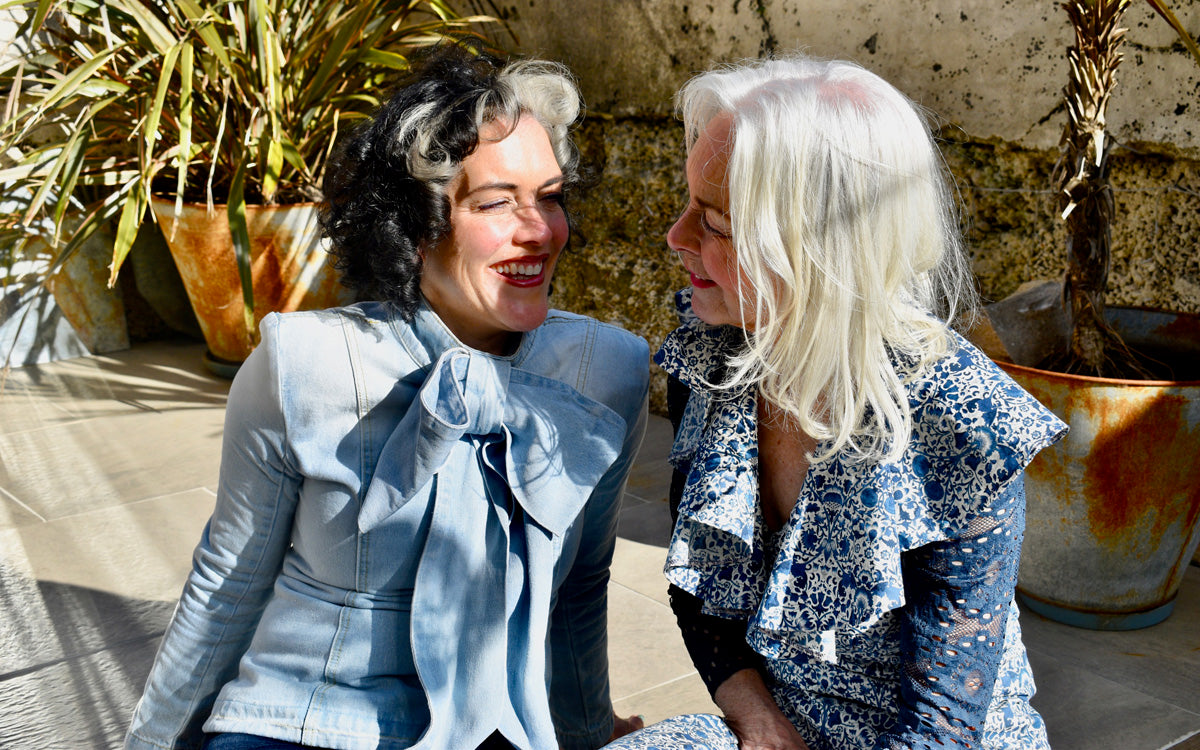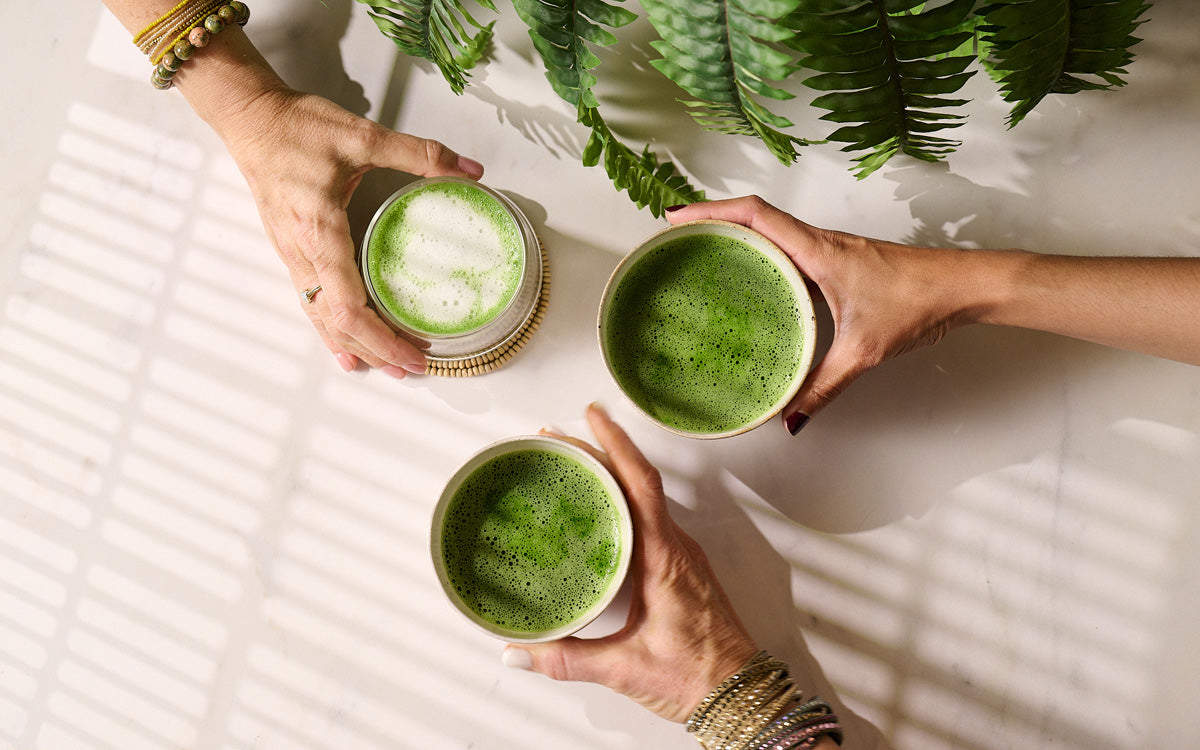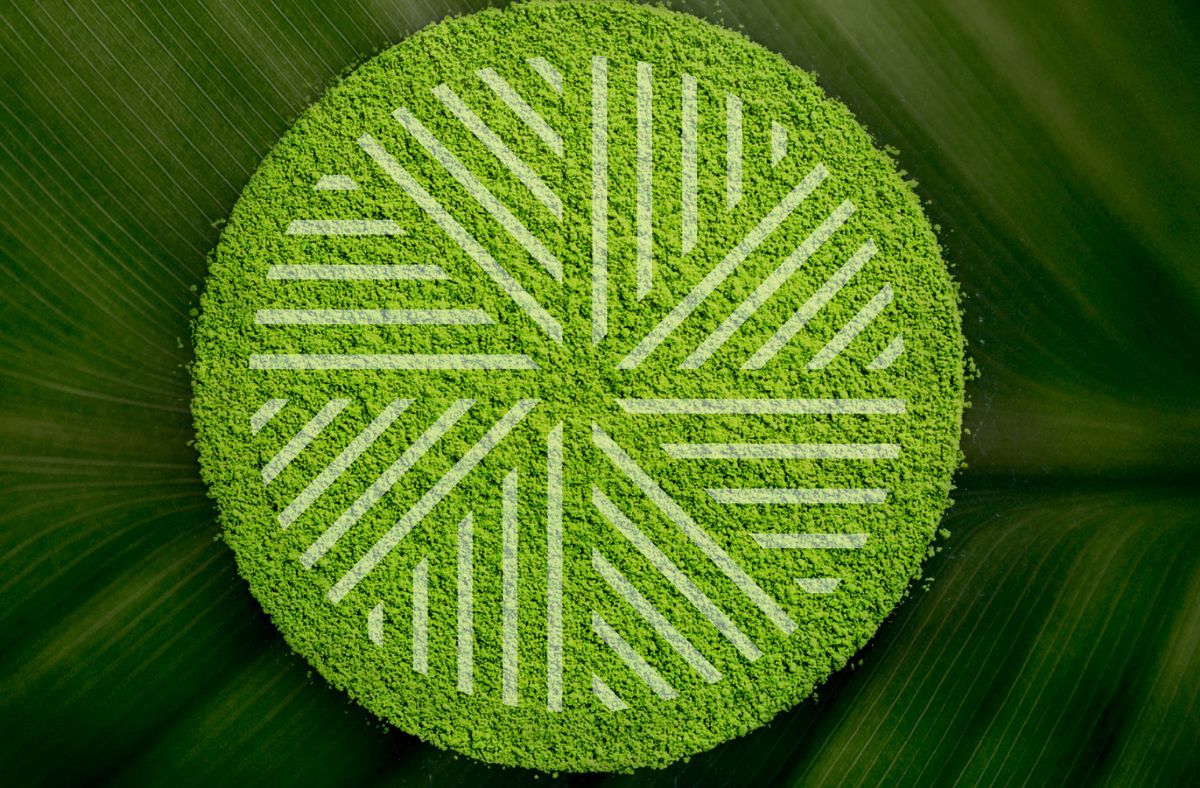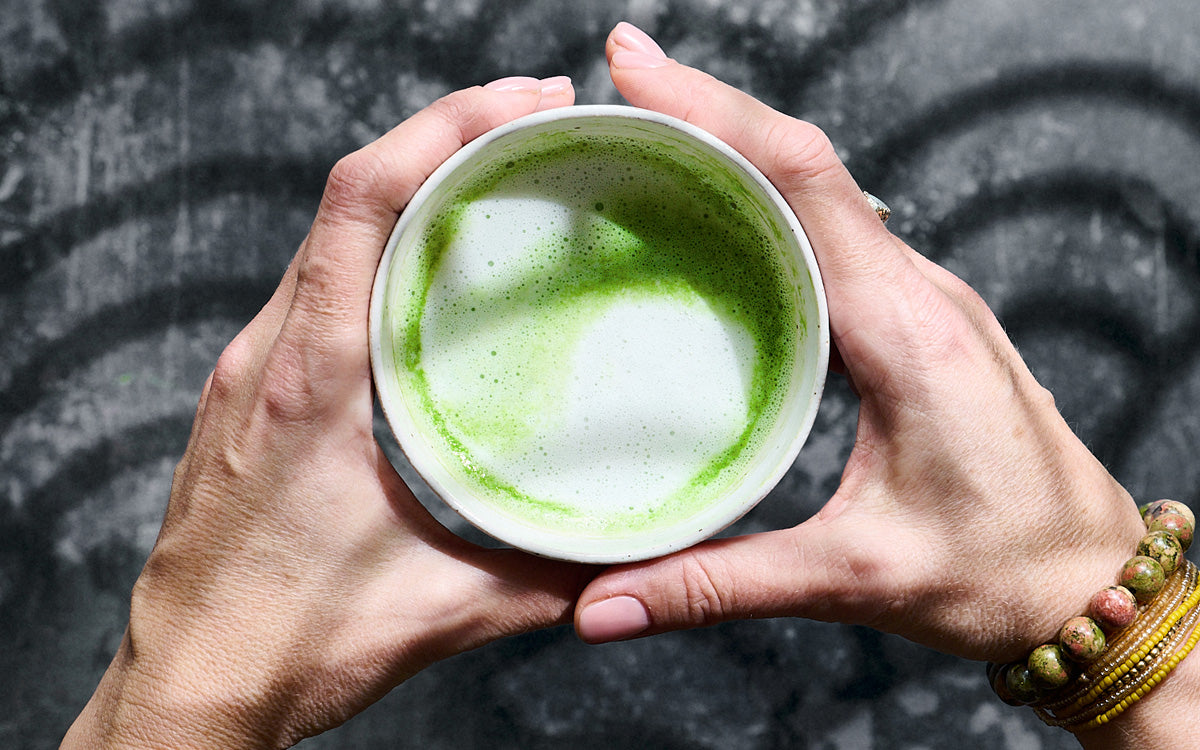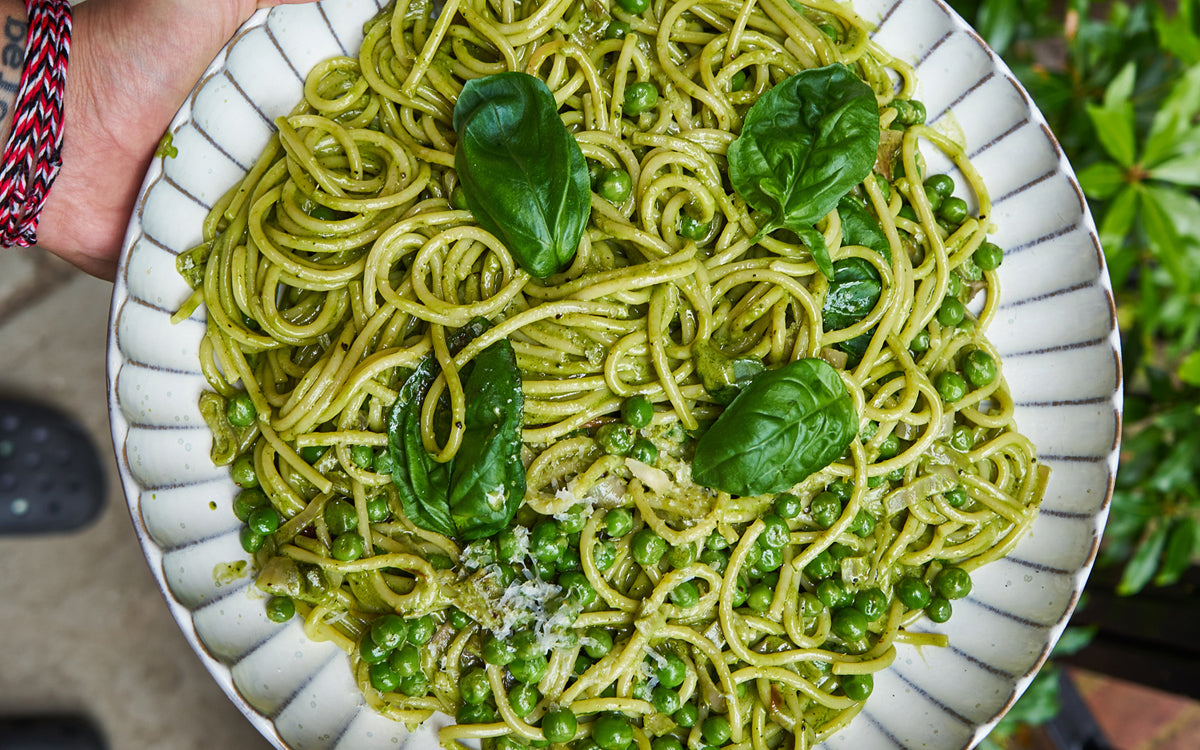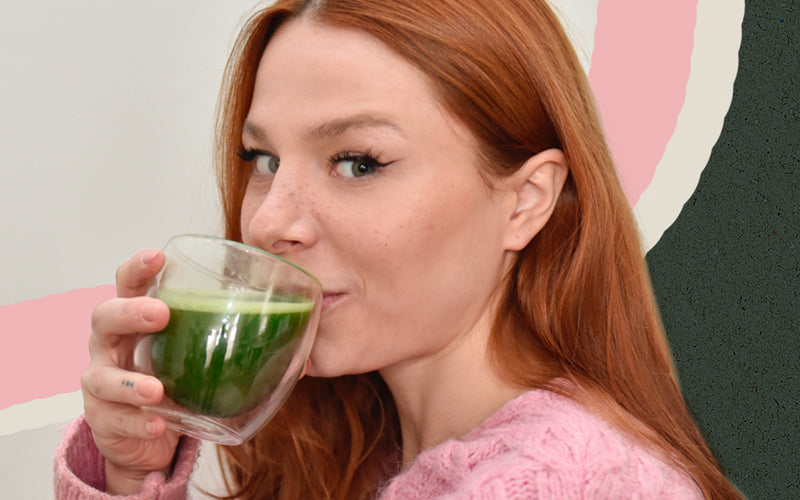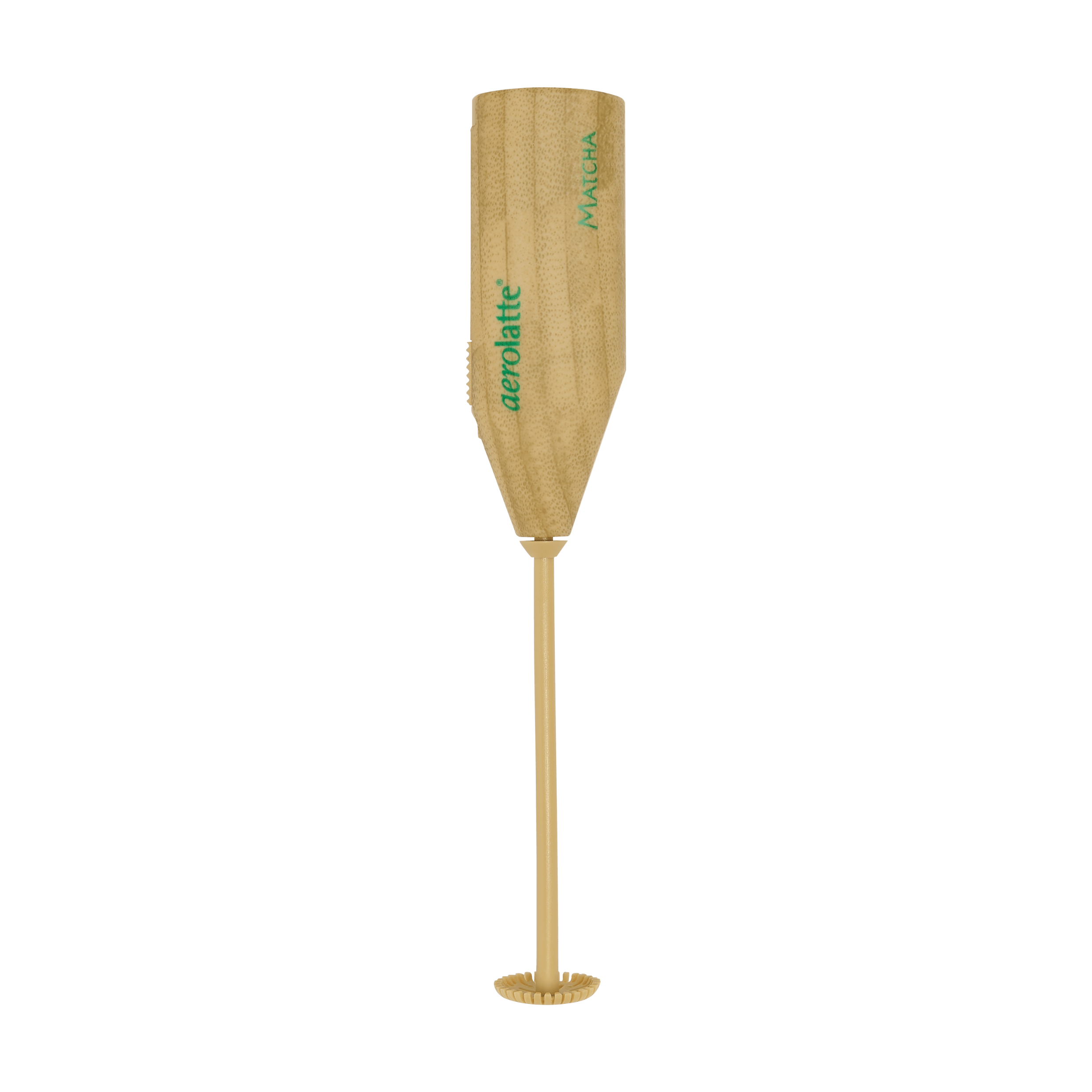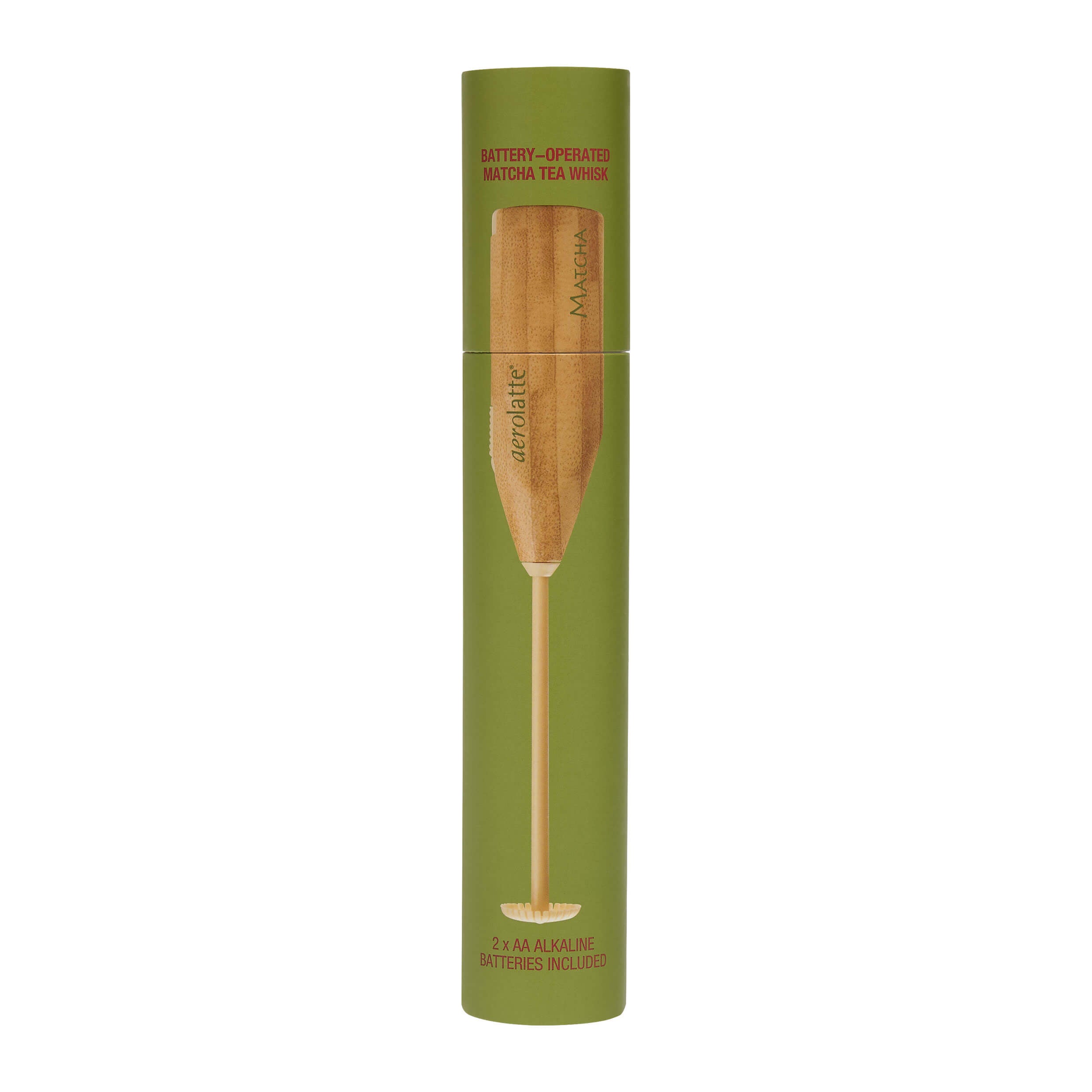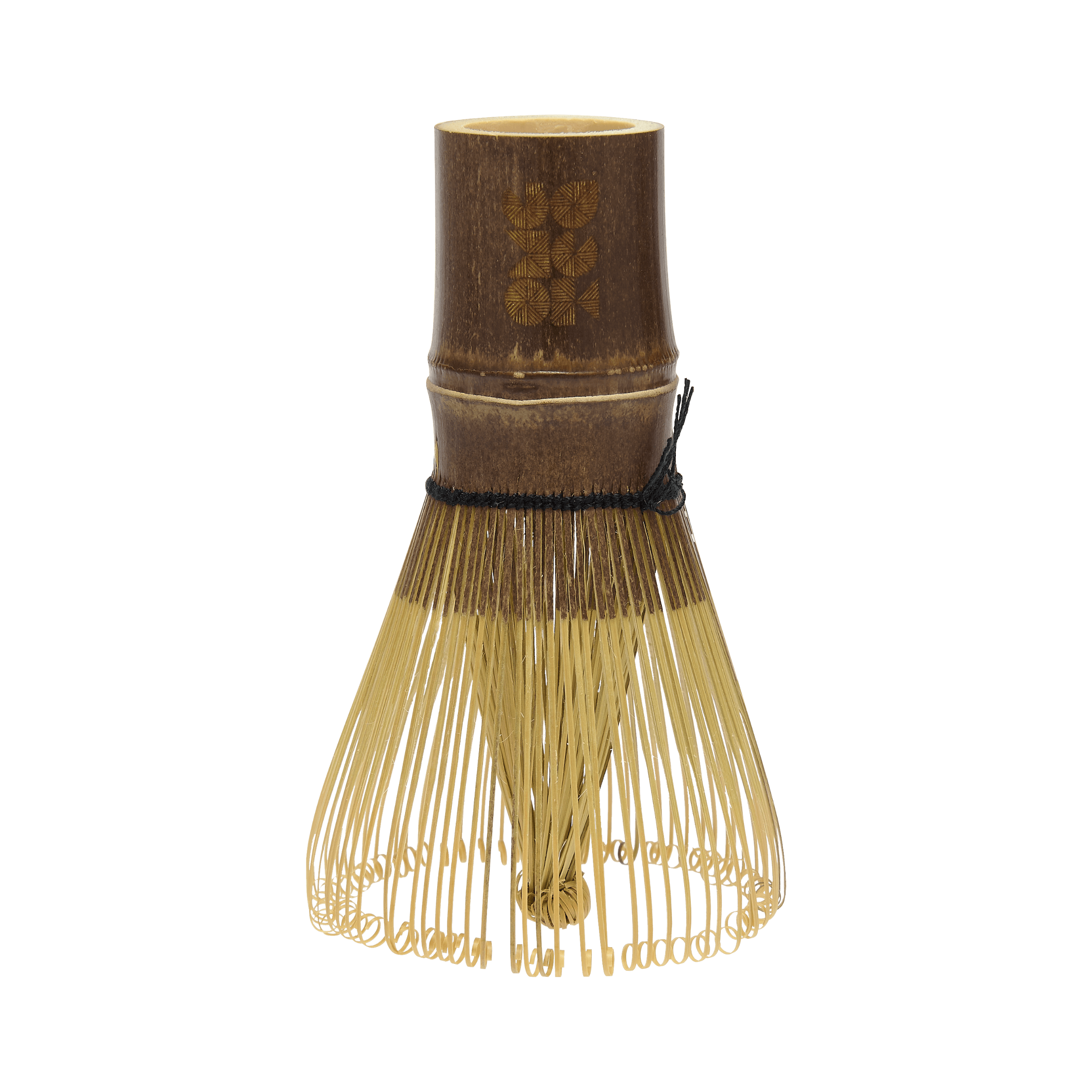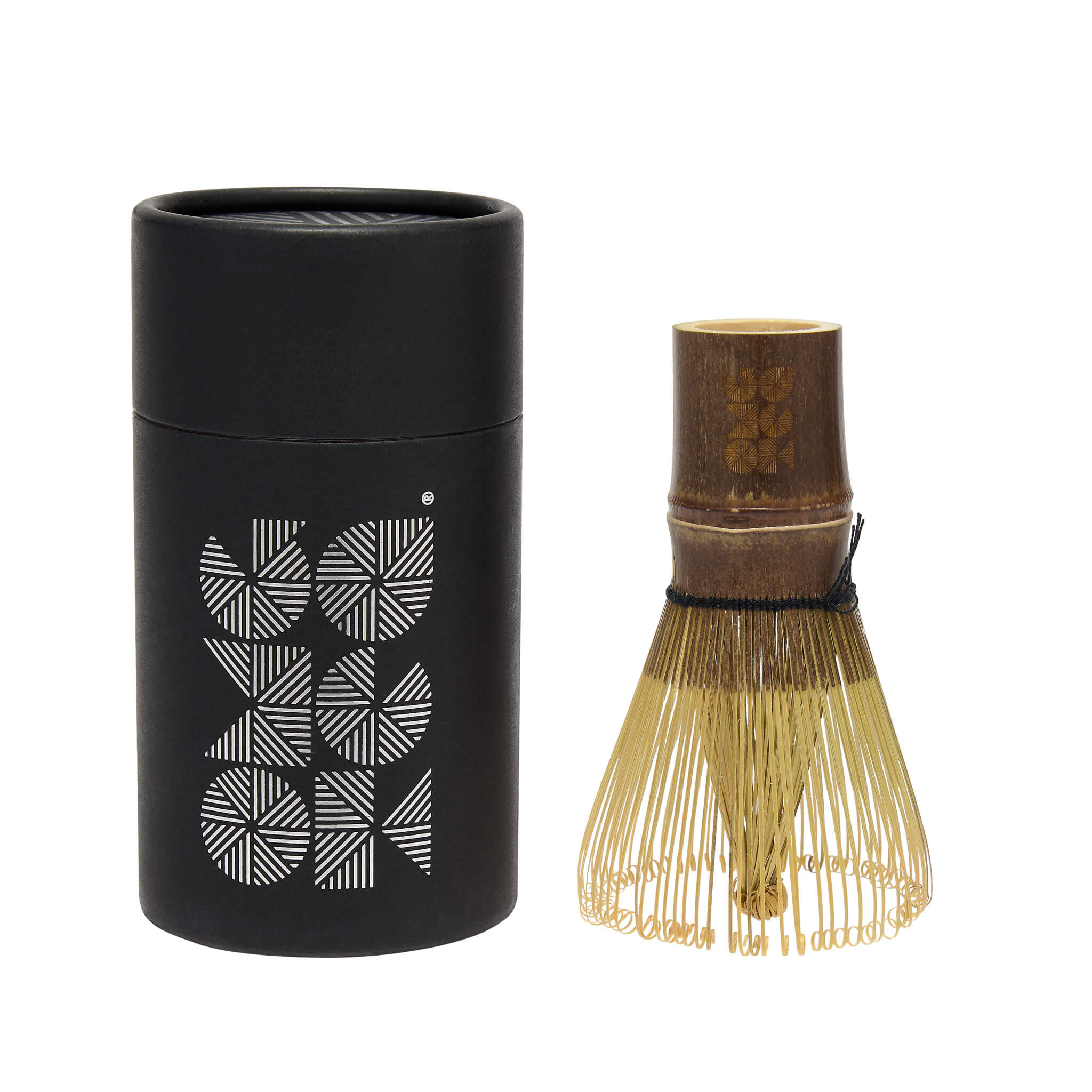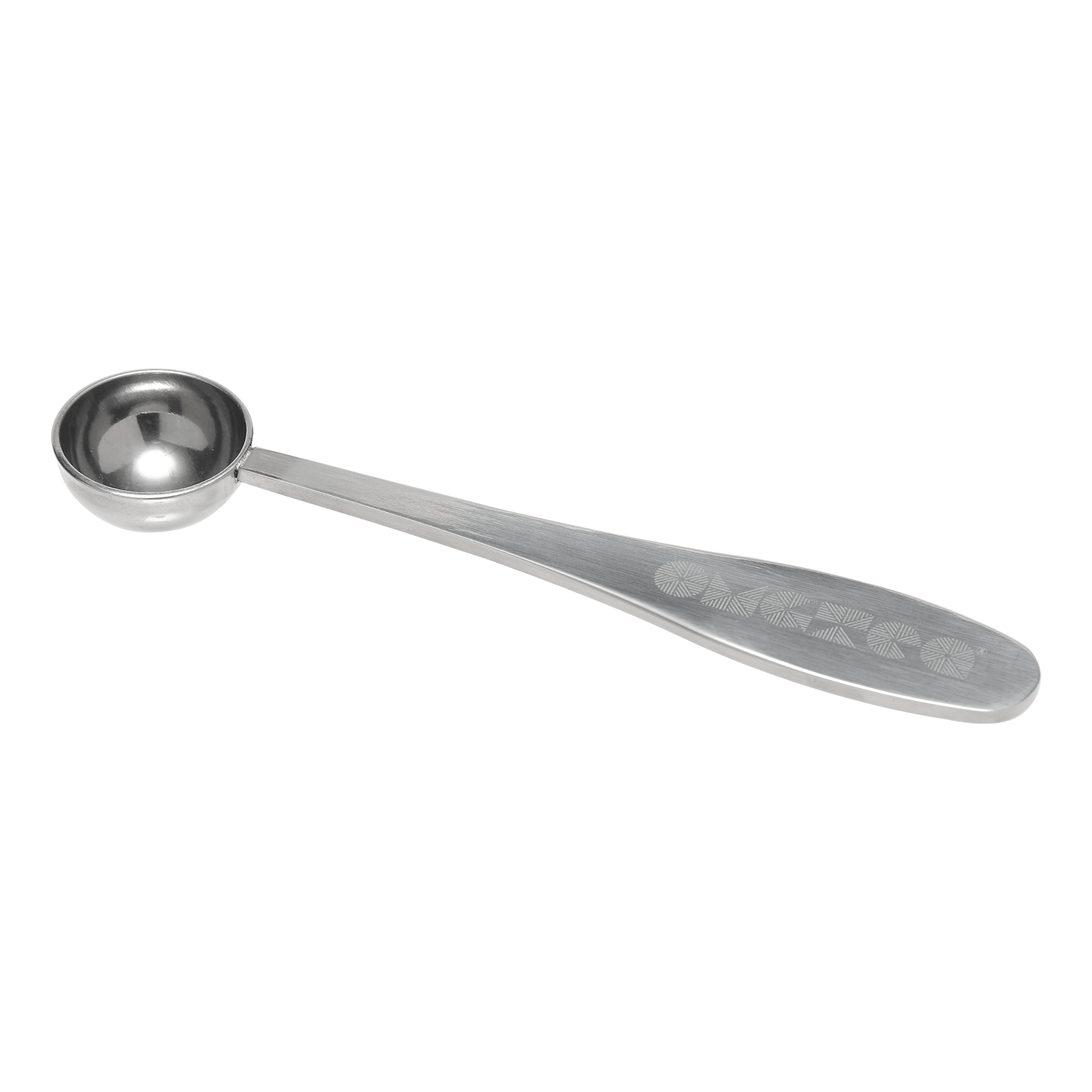FAQ
General Questions
What is Matcha?
Quality Matcha isn't just another type of green tea, it's the champagne of green tea. Matcha comes from the same plant as all tea, Camelia Sinesis but the way it is cultivated and processed is what makes matcha so special. Real matcha comes from Japan and is made from the finest shade-grown leaves stone-ground to a fine powder.
Translated from Japanese, matcha means "powdered tea". With regular green tea, which is infused in hot water, 85-90% of the nutrients are discarded with the leaves. However, with matcha, you're drinking the entire leaf so your body benefits from all the soluble and non-soluble elements of the tea first hand.
What makes quality Matcha so special?
Matcha comes from the same tea plant (Camelia Sinensis) as all teas but about 4 weeks before it's harvested the Matcha tea field is shaded in bamboo (or a man-made bamboo equivalent), this special shading technique results in a 90% reduction of sunlight. The plants, now growing almost in the dark, compensate for the lack of light with an intense production of chlorophyll making the leaves rich in amino acids. The process encourages the chlorophyll to rise to the top and then at the time of harvest only the youngest most tender, emerald green leaves are picked from the top third of the bush.
After being steamed and then freeze-dried, the highest quality leaves are selected and the stems gently removed. The last step in producing our Matcha takes place in the factory where special granite stone mills grind the Tencha tea into superfine Matcha powder. The grinding itself is done in a cleanroom in which temperature and humidity are kept constant. Industrial quality air filters keep the air clean and eliminate bacteria and germs. One single stone mill grinds only up to 30-40g of tea per hour, which is the amount of one of our OMGTea Matcha tins. More rapid grinding would burn the leaves.
This very fine powder is mixed with water and drunk rather than being brewed and the leaves (or tea bag) discarded. This means you get all the benefits of the Matcha tea in every cup you drink - nothing is thrown away.
Are all OMGTea products organic?
Yes all of our products are certified organic with the Soil Association.
How does quality Matcha get its' rich green colour?
OMGTea Matcha cultivation involves shading the plants with bamboo three to four weeks before harvesting. This process boosts the nutrient levels to of matcha to extraordinary levels.
The plants, which grow in near-darkness, compensate for the lack of light by producing an intense amount of chlorophyll. The leaves become packed with amino acids and the chlorophyll rises to the top, making the leaves a rich emerald green.
A Matcha rich and green in colour means that the leaves used were grown very well, with just the right duration of pre-harvest shading and other cultivation controls to encourage the plant to produce more chlorophyll. It tells us that the tea is rich in nutrition; higher in antioxidants and amino acids like L-theanine.
Does Matcha contain caffeine?
Yes it does but each ½ teaspoon serving (1gram) contains 34mg of caffeine, compared to 70-180mg for a cup of coffee. The other components that make up Matcha slow down the release of caffeine into the body. It usually takes three to six hours for the caffeine to be absorbed into the bloodstream; however the mental alertness and energy are apparent almost immediately upon drinking it.
In contrast to coffee, this timed-release mechanism tends to inhibit any sudden insulin increases, so there is no “crash” associated with quick drops in blood sugar that so many coffee drinkers feel an hour or so after drinking a cup. Nor does Matcha stimulate the production of cortisol, the stress hormone, as coffee can.
What region in Japan does OMGTea come from?
OMGTea comes from the Kagoshima prefecture and our award winning matcha is the pride and joy of our tea farmers. Kagoshima is on the southern island of Kyûshû, known for its lush vegetation and unspoilt landscape. The warm, humid climate provides the perfect conditions for growing matcha. Kagoshima is a volcanic island and as such has extremely nutrient-rich soils, at least eleven active volcanoes continue to provide the valuable minerals that help these extraordinary tea plants grow. Such optimum conditions enable the cultivation of the best quality organic matcha and it has been cultivated here for over 700 years. This long history and the ongoing optimisation of cultivation processes has made Kagoshima the second-biggest tea prefecture in Japan, specifically offering optimum conditions for organic matcha cultivation.
Do you test your tea for heavy metals?
Heavy metals are elements of the earth's crust and a natural component of clay minerals in the soil. The tea plants absorb heavy metals through the roots with the water in the soil, resulting in a natural content in plants and food. This accumulation of heavy metals in the cultivation of the tea plant is unavoidable.
There is no entry of heavy metals through the further processing to matcha.
Regarding contaminants, we guarantee the compliance of our products with the Commission Regulation (EC) No 2023/915 setting maximum levels for certain contaminants in foodstuff.
Furthermore, we have set maximum levels for heavy metals in our product specification. We test our products annually for various parameters including heavy metals. This way we can guarantee the greatest possible safety.
Why are there lumps in my OMGTea Matcha?
Believe it or not, lumps are a sign of quality! At OMGTea we only use high-quality organic leaves that are gently and slowly stone ground to make sure the leaves are not burned and that the powder is fine. This process not only ensures a smoother taste but it also ensures your matcha mixes better with water. The finer the powder however, the more prone it is to clumps. Clumps forming can be avoided if the matcha powder is sifted before adding water or if the clumps are broken down by whisking after you have added water.
To avoid clumps, we always recommend using a tea strainer which is made of very fine mesh. Simply hold the strainer over your mug or bowl and put the matcha through it before mixing and this will set you well on your way to making the perfect cup of matcha every time!
Can I drink Matcha if pregnant?
Due to Its caffeine content it might be advisable for pregnant women to avoid drinking matcha, particularly in the first trimester. A typical serving of Matcha has 34mg of caffeine.
What is the best before date on your Matcha and how do I store it?
The BBD for Matcha is usually 2-3 years (at OMGTea we set it at 2 years) if it’s kept in a dark, dry place at room temperature. The ideal way to preserve Matcha is of course to be refrigerated below +5C (41F) or fridge temperature after opening. The more it comes in contact with air and light, the faster the degradation.
Why do you sell your Matcha in tins?
Tins are the ideal packaging method for protecting and preserving Matcha tea. The tin is mechanically sealed air tight in Japan to ensure freshness. This ensures it is kept fresh as long as possible.
I'm addicted to coffee, is Matcha a good alternative for me?
Definitely and probably the best alternative option for those addicted to coffee. Matcha gives an energy release 4-6 times longer than coffee, while also regulating blood sugar, meaning that you will feel both energised and content, while the L-theanine effect relaxes and calms the nervous system, rather than over- stimulating it.
What is L-theanine?
L-theanine (chemical name g-ethylamino-L-glutamic acid) is a rare, water soluble amino acid and has been shown in scientific and clinical studies to have a direct influence on brain activity, particularly reducing stress. It is found only in certain species of tea plants and most abundantly in Japanese Matcha. It was first discovered in 1949 and not only does it provide one of the important health benefits of tea, it is also the major flavour of green tea.
L-theanine is responsible for increasing alpha brain wave activity, which in turn promotes relaxation. When combined with the stimulant caffeine it allows tea to induce a feeling of increased concentration over a longer period of time, compared to caffeine alone. This is because the effects of caffeine are being moderated by L-theanine.
Do I need to worry about radiation?
Since the Fukushima disaster, checking our teas for radioactivity has become a standard process. We mainly source our tea from cultivation areas in the Kyushu region in the southwest of Japan. These tea fields are more than 1,000 kilometres away from Fukushima. Since the incident we regularly analyse our products for radiation and all of our products are in the non-detectable area.
Is OMGTea Matcha gluten free?
Matcha is naturally gluten-free. No colour or flavour enhancers, sugar, or anything added. Just pure Japanese organic matcha green tea.
Is OMGTea Matcha vegan?
Yes our full range of Matcha tea is vegan.
Payment
What credit and debit cards do you accept?
You can use any major debit or credit card, including American Express and PayPal.
Can I order over the phone?
Yes you can contact us on 01273 855882 to place an order over the phone if you'd prefer. However, we are a small team and aren't always able to get to the phone so it's much faster to order online via our website. It's also safer to order via the website as we won't need to take your credit card details.
Is your website safe?
We use Shopify as our platform, which is widely used and is PCI compliant.
They say: "Shopify is certified Level 1 PCI DSS compliant. This compliance extends to all online stores powered by Shopify. We are very serious about securely hosting your online store and have invested significant time and money to certify our solution is PCI compliant. From annual on-site assessments validating compliance to continuous risk management, we work really hard to ensure our shopping cart software and ecommerce hosting is secure."
Shipping
What are UK delivery timings?
UK orders are shipped via Royal Mail Tracked 48 and 24, depending on what delivery option you choose at checkout.
Please note that whilst in most cases, your order will arrive within 2 to 4 days, we are unable to guarantee timings.
Once your order has been shipped you will receive a tracking number so that you can track your package.
What are your UK shipping costs?
Standard delivery for orders within the UK and under £40 is £3.50.
You qualify for free delivery to any UK address when you spend £40 or more in a single transaction. Please note that shipping of goods over 2kg will also incur a delivery charge (regardless of order value).
• Standard Shipping (Royal Mail 48 hours tracked): £3.50
• Express Shipping (Royal Mail 24 hours tracked): £4.50
• Free Shipping: on orders of £40 or more (maximum weight 2kg)
Do you ship to the EU?
Unfortunately we have had to suspend EU shipments temporarily.
New border procedures, including additional customs paperwork, needed for parcels going to Europe, are putting extra pressure on turnaround and transit times and increasing costs. There is the added complexity of customs charges as we are now outside of the EU and at the moment, we are unable to advise our European customers on what these may be. As a result, we don't feel that we can offer the level of service you deserve.
Thank you all for your support and we would like to reassure you that we are doing all we can to work out a solution that works for everyone and to be able to start shipping OMGTea products to our European customers again soon.
Please accept our sincere apologies for any inconvenience and if you should have any questions, don't hesitate to get in touch at info@omgteas.co.uk.
How can I find out the status of my order / delivery?
Once your order has been shipped you will receive a link to the Royal Mail website and a tracking number so that you can track your package.
Cancelling, Changing Or Returning An Order
I've just placed an order, can I cancel it?
You can cancel your order up to 7 days after you've placed it.
We process orders quite quickly, usually on the same day if processed before 2pm (excluding weekends and bank holidays) but if you contact us right away, we will try our best to cancel it and refund you before sending out. Please email us at info@omgteas.co.uk with any order change or cancellation requests.
You can also return your order to us once you receive it and we'll issue a refund as soon as we've checked the items are unopened and in good condition. You will need to pay for the return postage, we recommend you use a signed for option as we can't issue a refund until we receive the goods.
Can I cancel an order after I have received it?
You can cancel your order up to 7 days after you've received it.
You can also return your order to us once you receive it and we'll issue a refund as soon as we've checked the items are unopened and in good condition. You will need to pay for the return postage, we recommend you use a signed for option as we can't issue a refund until we receive the goods. Returns will take approximately 5 working days for the process once the goods have arrived. Items must be in original packaging. If our labels are removed from the product, we will not be able to issue a refund.
For reasons of hygiene and public health, refunds/exchanges are not available for opened products (this does not apply to damaged goods – damaged products will be exchanged like for like).
We strongly recommend that you fully insure the package that you are returning and use a carrier that can provide you with a proof of delivery. OMGTea will not be held responsible for items lost or damaged in transit.
If you are returning items for exchange please be aware that a second delivery charge may apply.
RETURNS ADDRESS:
OMGTea Ltd, Projects, Nile House, Niles Street, Brighton BN1 1HW
I received my order but some items are missing, what should I do?
If you have any lost or missing products from your order then please contact our Customer Care team info@omgteas.co.uk with your order number, details of the missing items and any supporting photographs.
Please notify us of any missing items within 30 days of the dispatch date. Unfortunately, we will not be held responsible for any loss should you fail to do this.
Stockists
Where can I buy OMGTea in the UK?
OMGTea can be purchased at a variety of quality and natural retailers including: Selfridges, Ocado, Holland & Barrett, Wholefoods Market, Planet Organic, Healf, and Victoria Health.
We also work in partnership with d Daylesford Organic.
Our full product range is also available on our own website www.omgteas.co.uk and Amazon.
Are your products sold by any stores outside of the UK?
Not at the moment but we are working on that! Also, Selfridges stock our range of products and they ship internationally.
Wholesale
How do I find out about wholesale sales?
We offer competitive pricing for authentic high quality matcha, we also provide support, education, and training to make your consumer offering a success.
Please contact us at sales@omgteas.co.uk for wholesale inquiries.
Promotions & Competitions
Does OMGTea run any consumer competitions?
Yes! We run a few different kinds of competitions throughout the year.
Matcha Challenge Prize Draw
Every January we run the OMGTea Matcha Challenge where we ask participants to have a minimum of one serving of matcha every day for 21 days. At the end of the Challenge, participants complete a survey to reflect on their experience and they are entered into a prize draw to win Matcha for a year (1 x AAA Grade 30g tin every month for 12 months).
Social Media Competitions
Throughout the year we also do a variety of ad hoc giveaways, sometimes partnering with groups of other brands. If you are interested in entering these competitions, we suggest you follow us on our social media accounts, which is where we will be announcing details.
What are the Terms & Conditions for the Matcha Challenge?
NO PURCHASE IS NECESSARY TO ENTER OR WIN. A
PURCHASE DOES NOT INCREASE THE CHANCES OF WINNING.
1. Eligibility: This Campaign is open only to those who sign up by completing the form on the Matcha Challenge landing page or via email hello@omgteas.co.uk , who are 18 as of the date of entry and complete the survey by the campaign closing date of February 28th, 2025. The Campaign is only open to legal residents of the United Kingdom and is void where prohibited by law.
Employees of OMGTea Ltd, its affiliates, subsidiaries, advertising and promotion agencies, and suppliers, (collectively the “Employees”), and immediate family members and/or those living in the same household of Employees are not eligible to participate in the Campaign. The Campaign is subject to all applicable national and local laws and regulations. Void where prohibited.
2. Agreement to Rules: By participating, the Contestant (“You”) agree to be fully unconditionally bound by these Rules, and You represent and warrant that You meet the eligibility requirements. In addition, You agree to accept the decisions of OMGTea Ltd as final and binding as it relates to the content of this Campaign.
3. Campaign Period: Registration will be accepted online starting November, 20234and ending on February 7, 2025. All online surveys must be completed by February 28, 2025.
4. How to Enter: The Campaign must be entered by registering. The entry must fulfil all Campaign requirements, as specified, to be eligible to win a prize. Entries that are incomplete or do not adhere to the rules or specifications may be disqualified at the sole discretion of OMGTea Ltd. You may enter only once. You must provide the information requested. You may not enter more times than indicated by using multiple email addresses, identities, or devices in an
attempt to circumvent the rules. If you use fraudulent methods or otherwise attempt
to circumvent the rules, your submission may be removed from eligibility at the
sole discretion of OMGTea Ltd.
5. Prizes: The Winner(s) of the Campaign (the
“Winner”) will receive a Year's supply of Matcha AAA Grade (1 x 30g tin per month for 12 months). Actual/appraised value may differ at time of prize award. The specifics of the prize shall be solely determined by OMGTea Ltd. No cash or other prize substitution shall be permitted except at OMGTea Ltd discretion. The prize is non-transferable. Any and all prize-related expenses, including without limitation any and all national and/or local taxes, shall be the sole responsibility of Winner. No substitution of prize or transfer/assignment of prize to others or request for the cash equivalent by Winner is permitted. Acceptance of prize constitutes permission for OMGTea Ltd to use Winner’s name, likeness, and entry for purposes of advertising and trade without further compensation, unless prohibited by law.
6. Odds: The odds of winning depend on the number of eligible entries received.
7. Winner(s) Selection and Notification: Winners will be selected by random draw under the supervision of OMGTea Ltd. Winner will be notified by email within five (5) days following selection of Winner. OMGTea Ltd shall have no liability for Winner’s failure to receive notices due to spam, junk e-mail or other security settings or for Winner’s provision of incorrect or otherwise non-functioning contact information. If Winner cannot be contacted, is ineligible, fails to claim the prize within 14 days from the time award notification was sent, or fails to timely return a completed and executed declaration and release as required, the prize may be forfeited and an alternate Winner selected. Receipt by Winner of the prize offered in this Campaign is conditioned upon compliance with any and all national and local laws and regulations. ANY VIOLATION OF THESE OFFICIAL RULES BY WINNER (AT OMGTea Ltd‘s SOLE DISCRETION) WILL RESULT IN WINNER’S DISQUALIFICATION AS WINNER OF THE CAMPAIGN, AND ALLPRIVILEGES AS WINNER WILL BE IMMEDIATELY TERMINATED.
8. Rights Granted by You: By entering this content (e.g., photo, video, text, etc.), You understand and agree that OMGTea Ltd, anyone acting on behalf of OMGTea Ltd, and OMGTea Ltd’s licensees, successors, and assigns, shall have the right, where permitted by law, to print, publish, broadcast, distribute, and use in any media now known or hereafter developed, in perpetuity and throughout the World, without limitation, your entry, name, portrait, picture, voice, likeness, image, statements about the Campaign, and biographical information for news, publicity, information, trade, advertising, public relations, and promotional purposes without any further compensation, notice, review, or consent.
9. Terms & Conditions: OMGTea
Ltd reserves the right, in its sole discretion, to cancel, terminate, modify or suspend the Campaign should virus, bug, non-authorized human intervention, fraud, or other cause beyond OMGTea Ltd’s control corrupt or affect the administration, security, fairness, or proper conduct of the Campaign. In such case, OMGTea Ltd may select the Winner from all eligible entries received prior to and/or after (if appropriate) the action taken by OMGTea Ltd. OMGTea Ltd reserves the right, in its sole discretion, to disqualify any individual who tampers or attempts to tamper with the entry process or the operation of the Campaign or website or violates these Terms & Conditions. OMGTea Ltd has the right, in its sole discretion, to maintain the integrity of the Campaign, to void votes for any reason, including, but not limited to: multiple entries from the same user from different IP addresses; multiple entries from the same computer in excess of that allowed by Campaign rules; or the use of bots, macros, scripts, or other technical means for entering. Any attempt by an entrant to deliberately damage any website or undermine the legitimate operation of the Campaign may be a violation of criminal and civil laws. Should such attempt be made, OMGTea Ltd reserves the right to seek damages to the fullest extent permitted by law.
10. Limitation of Liability: By entering, You agree to release and hold harmless OMGTea Ltd and its subsidiaries, affiliates, advertising and promotion agencies, partners, representatives, agents, successors, assigns, employees, officers, and directors from any liability, illness, injury, death, loss, litigation, claim, or damage that may occur, directly or indirectly, whether caused by negligence or not, from: (i) such entrant’s participation in the Campaign and/or his/her acceptance, possession, use, or misuse of any prize or any portion thereof; (ii) technical failures of any kind, including but not limited to the malfunction of any computer, cable, network, hardware, or software, or other mechanical equipment;
(iii) the unavailability or inaccessibility of any transmissions, telephone, or
Internet service; (iv) unauthorized human intervention in any part of the entry
process or the Promotion; (v) electronic or human error in the administration
of the Promotion or the processing of entries.
11. Disputes: THIS Campaign IS GOVERNED BY THE LAWS OF United Kingdom AND East Sussex, WITHOUT RESPECT TO CONFLICT OF LAW DOCTRINES. As a condition of participating in this Campaign, participantagrees that any and all disputes that cannot be resolved between the parties, and causes of action arising out of or connected with this Campaign, shall be resolved individually, without resort to any form of class action, exclusively before a court located in East Sussex having jurisdiction. Further, in any such dispute, under no circumstances shall participant be permitted to obtain awards for, and hereby waives all rights to, punitive, incidental, or consequential damages, including reasonable attorney’s fees, other than participant’s actual out-of-pocket expenses (i.e. costs associated with entering this Campaign). Participant further waives all rights to have damages multiplied or increased.
12. Privacy Policy: Information submitted with an entry is subject to the Privacy Policy stated on the OMGTea Ltd website.
13. Sponsor: The Sponsor of the Campaign is OMGTea Ltd .
14. By participating in the contest, You, the Contestant, have affirmatively reviewed, accepted, and agreed to all of the Official Rules & Regulations.
Get in touch
Have questions we haven't answered here, or a general enquiry?
